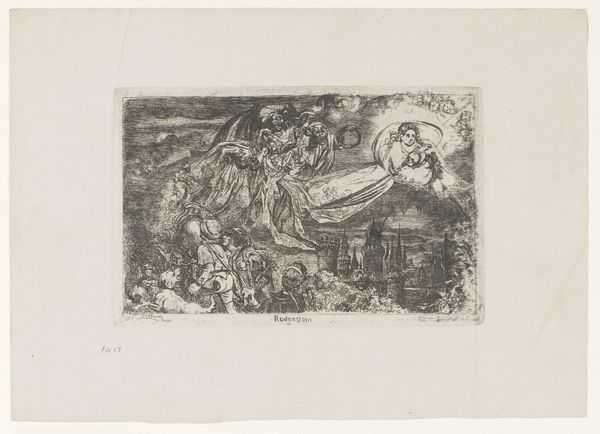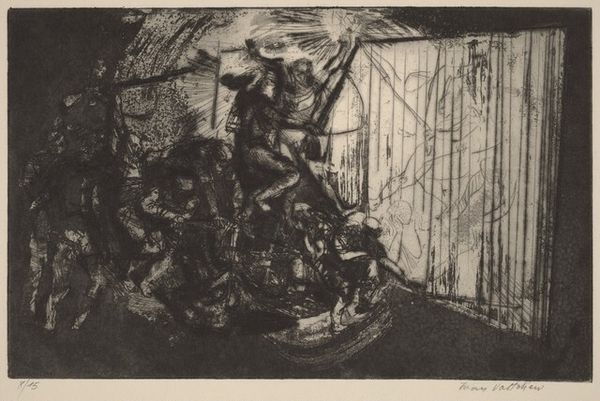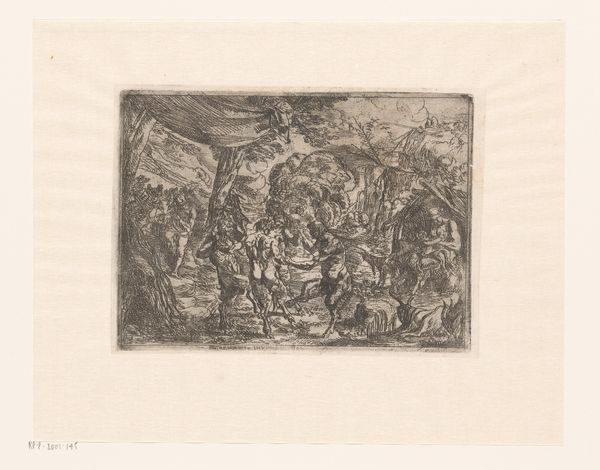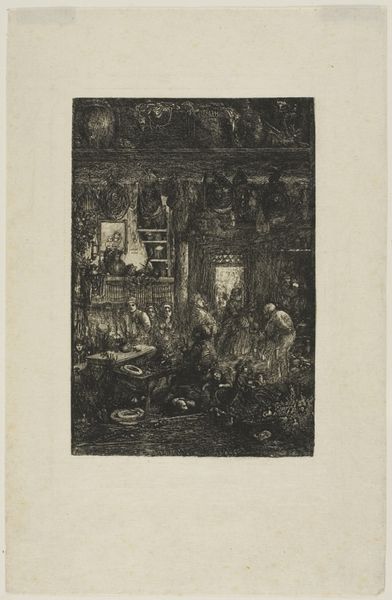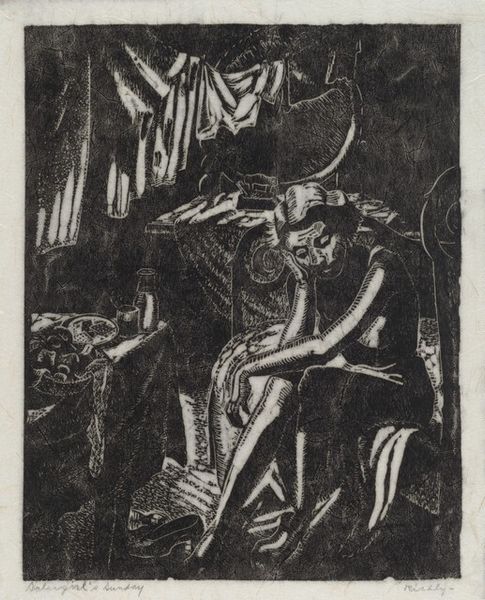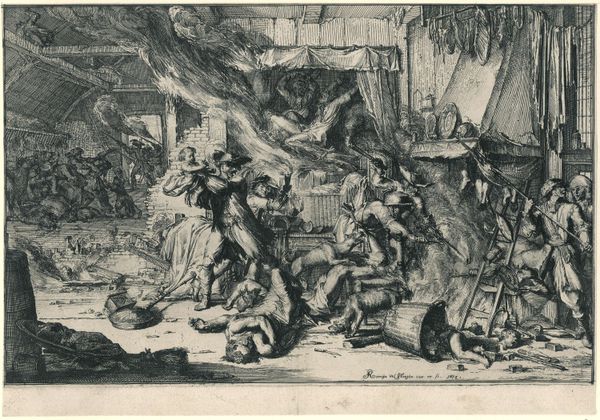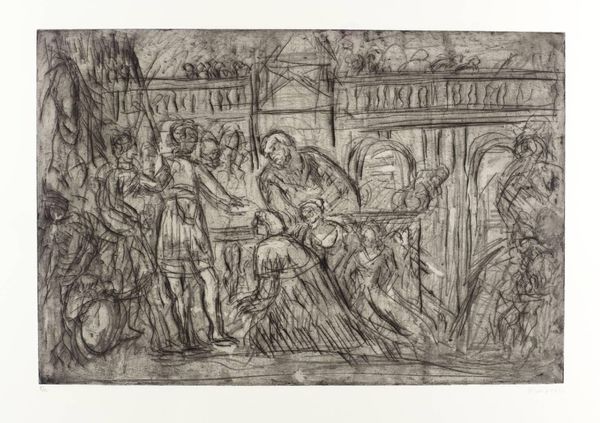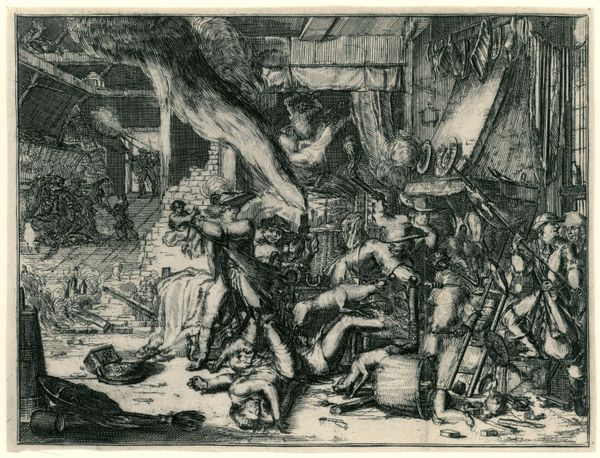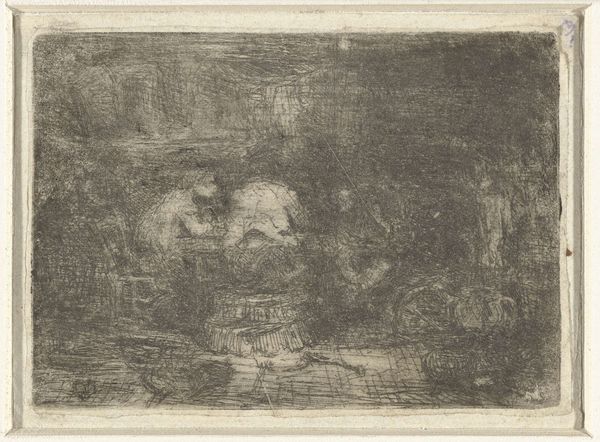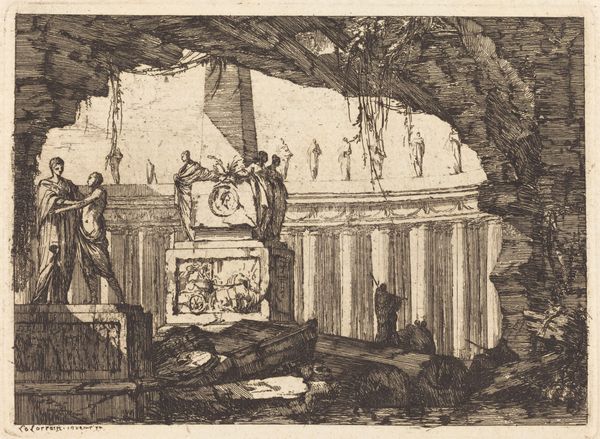
drawing, ink, engraving
#
drawing
#
neoclacissism
#
ink drawing
#
pen sketch
#
landscape
#
charcoal drawing
#
ink
#
cityscape
#
history-painting
#
engraving
Dimensions: height 632 mm, width 831 mm
Copyright: Rijks Museum: Open Domain
Editor: Here we have Francesco Piranesi's "Titelprent met tempel en bouwfragmenten" from 1804, currently at the Rijksmuseum. It's an engraving, rendered in ink, that depicts ancient ruins. I’m struck by the chaotic energy, a real sense of a lost world being rediscovered. What stands out to you? Curator: What immediately captures my attention is the socio-political context. The late 18th and early 19th centuries witnessed intense fascination with classical antiquity, fueled by archaeological discoveries like Pompeii. But these discoveries weren't just about aesthetic appreciation; they became potent symbols in the rise of nationalism. How do you think Piranesi’s work participates in this political narrative? Editor: Well, seeing these Roman ruins does make me think of power, empire... But also the transience of that power. There’s a romantic ruin-gazing aspect. Curator: Precisely! Piranesi, whose father Giovanni Battista Piranesi was also famed for his depictions of Roman antiquities, participates in constructing a visual narrative of a powerful past. However, he is also commenting on the present. His architectural fantasies of the Roman Empire subtly critiqued contemporary urban planning, specifically questioning the legacy of Roman authority and its use of triumphal imageries. Editor: I never considered that this aestheticization might also be a subtle commentary. Curator: Also, note the drawing style. The stark contrasts and dramatic perspectives lend an almost theatrical quality to the print, heightening the spectacle of the ruins. In your opinion, does this theatricality amplify or diminish the authenticity of the historical representation? Editor: I think it perhaps diminishes its objectivity, making it more of a romantic and personalized vision of that historical reality. It's powerful, but subjective. Curator: Indeed. We must remember the print itself operates within the burgeoning art market of the time. Disseminated widely through print culture, Piranesi's vision reached a broad audience, shaping perceptions of Roman grandeur, and implicitly framing contemporary Europe in relation to that perceived "golden age." Editor: That makes me see this piece with entirely new eyes. Thanks for highlighting those connections. I hadn't realized how deeply implicated this drawing is with broader historical and cultural narratives! Curator: It shows how art functions within society; shaping and being shaped by the political and social currents of the day.
Comments
No comments
Be the first to comment and join the conversation on the ultimate creative platform.
